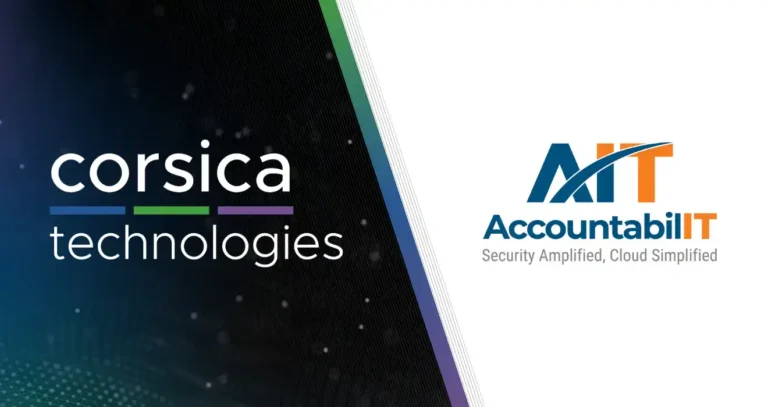Last updated September 25, 2025.
The internet can be a dangerous place. New threats appear all the time, making it hard to keep up. This is where managed cybersecurity services can help. These services provide human experts and sophisticated tools that act as digital bodyguards for your business.
What can a good MSSP protect you from?
Almost anything. Here’s how they do it.
Key takeaways:
- MSSPs have your back, protecting you from all sorts of cyberattacks.
- MSSPs use the latest and greatest tools, including AI, to stop attacks in their tracks.
- MSSP teams are on watch 24/7/365, ready to shut down threats at a moment’s notice.
What specific threats do MSSPs protect against?
Quick answer:
An MSSP is like a digital bodyguard for your business. They protect you from many online threats. These include ransomware, phishing, and business email compromise (BEC). An MSSP also stops malware and distributed denial-of-service (DDoS) attacks. Plus, they guard against stolen passwords, insider threats, and hackers. They do this with a 24/7 Security Operations Center (SOC) and top security tools.
Why this matters:
Cyberattacks are no longer rare. They are constant and getting smarter. An MSSP is vital. They use multiple layers of defense, including powerful technology, human experts, and real-time threat information. This mix lowers your risk and helps your business run without issues.
Here are some of the common threats that MSSPs are ready to tackle:
- Ransomware: Attackers lock your files and demand money.
- Phishing: Fake emails try to steal your data or break into your systems.
- Malware: Harmful software spies on you or causes damage.
- DDoS attacks: Your systems are flooded with bot traffic that shuts them down.
- Exploits: Hackers use unpatched weaknesses in software to get in.
- Insider threats: Employees can cause harm by mistake or on purpose.
Which cyber threats are most frequently targeted by MSSPs?
Quick answer:
The FBI reports that phishing is the most common cybercrime. Ransomware and data breaches are also significant problems. All together, these three attack types cause the most trouble, according to the FBI. MSSPs are laser-focused on these types of attacks while also covering many others.
What the data shows:
The FBI’s 2024 Internet Crime Report shows how serious these cyberattacks are. There were over 859,000 complaints and $16 billion in losses in 2024. Phishing was the top crime, while ransomware caused major issues in healthcare, education, and government.
Here’s where MSSPs most often focus for their clients:
- Email threats: Phishing, spear-phishing, and BEC are all major concerns.
- Ransomware: Attackers now steal your data before they lock it.
- Stolen passwords: Weak or reused passwords are a significant risk.
- Cloud security: Default security settings are rarely adequate.
How do MSSPs detect and prevent ransomware attacks?
Quick answer:
MSSPs are serious about stopping ransomware, using many layers of defense to do so. They manage system weaknesses and use endpoint detection and response (EDR). They also separate networks and keep backups offline. They follow CISA guidelines to keep attackers out and help you recover fast.
Here are some of their key prevention strategies:
- Patching: MSSPs keep your software updated to fix security holes.
- Access control: MSSPs use MFA and give people access only to what they need.
- Email filters: MSSPs block bad attachments and links.
- Behavioral analysis: MSSPs look for signs of an attack so they can stop it early.
If an attack does happen, MSSPs have a playbook ready to go:
- Isolate systems: This stops the attack from spreading.
- Disable accounts: This locks out the attackers.
- Restore from backups: This gets your data back safely.
- Review the incident: This helps improve your defenses.
What role do MSSPs play in defending against phishing and malware?
Quick answer:
MSSPs are great at stopping phishing and malware. They use a mix of technology, training, monitoring, and expert human response to stop threats before they cause problems. These approaches typically follow FTC guidance on phishing.
Here’s how MSSPs cut down on phishing risks:
- Email authentication: MSSPs use tools like SPF, DKIM, and DMARC to stop fake emails.
- User training: MSSPs teach your team to spot phishing scams.
- Advanced filters: MSSPs check suspicious attachments and links in a safe place.
When it comes to malware, MSSPs have you covered with:
- Endpoint protection: MSSPs put a guard on every device to watch for trouble.
- Network segmentation: If malware gets in, MSSPs keep it in one place so it can’t spread.
- Threat hunting: MSSPs are always looking for hidden threats.
How do MSSPs address insider threats within organizations?
Quick answer:
Threats don’t always come from outside. Sometimes, they come from inside your own company. MSSPs help you build programs to find and stop these insider threats. MSSPs use monitoring, access rules, and behavior analysis, following advice from experts at SEI CERT and the National Insider Threat Task Force.
Here are the core elements of a solid insider threat program:
- Policy: Define what an insider threat is and who handles it.
- Tech controls: Use tools like Data Loss Prevention (DLP) to protect data.
- Monitoring: Look for strange activity, like large downloads or odd login times.
- Teamwork: HR, Legal, and Security should work together.
The National Insider Threat Task Force (NITTF) also has some great advice:
- Have a formal plan: Don’t just react to problems.
- Train your team: Make sure everyone knows the risks.
- Track your progress: See how well your program is doing and find ways to make it better.
Are MSSPs effective at managing zero-day vulnerabilities?
Quick answer:
Zero-day threats are especially dangerous. Since vendors don’t know about them, there is no patch to remediate the threat. But MSSPs know how to handle them. They have plans in place to deal with these threats. They use threat intelligence to find them early. They can also use temporary fixes to keep you safe until a patch is ready. Their methods often follow ISO frameworks.
Here’s how MSSPs minimize the risk of zero-day attacks:
- Threat intelligence: MSSPs are always learning about new threats.
- Virtual patching: MSSPs can block attacks even without a patch.
- Good communication: MSSPs keep everyone informed about new threats.
Why speed matters:
Zero-day threats can be hidden for years. That’s why it’s so important to have a team that is always watching your systems, providing many layers of defense.
Final Thoughts: Why MSSPs Are a Strategic Advantage
Working with a good MSSP gives you a big advantage. You get:
- 24/7 protection without the high cost of an in-house team.
- Strong defense against the most common and harmful threats.
- Help with meeting industry and government rules.
- Fast help when incidents happen, which saves you time and money.












